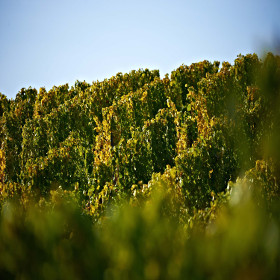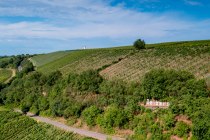Winery Hofmann
We, Carolin Willems and Jürgen Hofmann own two wineries, he Saar estate Willems-Willems and Rheinhessen Weingut Hofmann. It is very exciting and will be in the future. With our wedding in June 2006, we drew the bow between Saar and Rheinhessen and merged both wineries, also on a wine list. Our philosophy is to produce top wines - two different regions, different terroir, a large complete offer. With the new label equipment from the year 2011, we also optically implement our motto "slate meets shell limestone". A completely new winery on the "green meadow" in Appenheim was completed in November 2012. From the residential building and the vinotheque in Bauhaus style with wooden facade behind the long tree avenue one has a view over Appenheim and to the best vineyard locations. The Rheinhessen winery Hofmann: We are a middle family winery between Mainz and Bingen, about 4 km from the Rhine. Twenty million years ago, the foothills of the primeval sea of the Tertiary period extended here. They coined the shell limestone soils of the best locations in Appenheim. We cultivate in Rheinhessen 17.5 hectares of vineyards and focus on the good vineyard sites such as Hundertgulden or Daubhaus (shell limestone soils) we plant the appropriate grape varieties such as Riesling, Pinot, Sauvignon Blanc, Chardonnay, ...
English speaking visitors are welcome.


















